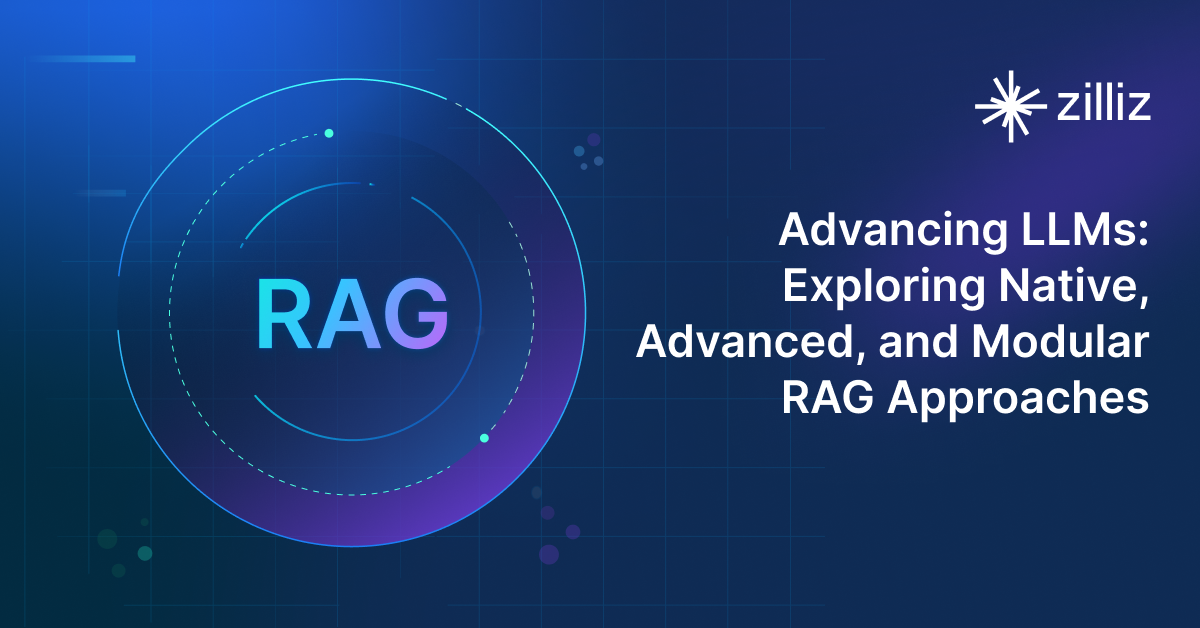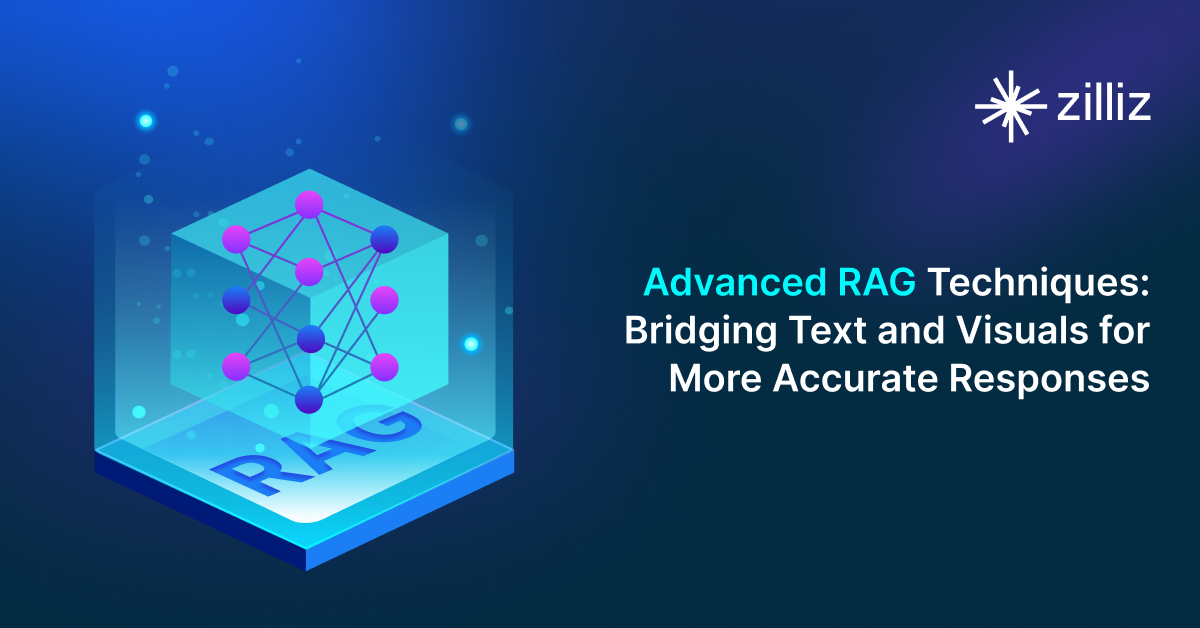Build RAG Chatbot with Llamaindex, Milvus, OpenAI GPT-o3-mini, and jina-clip-v2
Introduction to RAG
Retrieval-Augmented Generation (RAG) is a game-changer for GenAI applications, especially in conversational AI. It combines the power of pre-trained large language models (LLMs) like OpenAI’s GPT with external knowledge sources stored in vector databases such as Milvus and Zilliz Cloud, allowing for more accurate, contextually relevant, and up-to-date response generation. A RAG pipeline usually consists of four basic components: a vector database, an embedding model, an LLM, and a framework.
Key Components We'll Use for This RAG Chatbot
This tutorial shows you how to build a simple RAG chatbot in Python using the following components:
- Llamaindex: a data framework that connects large language models (LLMs) with various data sources, enabling efficient retrieval-augmented generation (RAG). It helps structure, index, and query private or external data, optimizing LLM applications for search, chatbots, and analytics.
- Milvus: An open-source vector database optimized to store, index, and search large-scale vector embeddings efficiently, perfect for use cases like RAG, semantic search, and recommender systems. If you hate to manage your own infrastructure, we recommend using Zilliz Cloud, which is a fully managed vector database service built on Milvus and offers a free tier supporting up to 1 million vectors.
- OpenAI GPT-o3-mini: A lightweight, efficient language model optimized for rapid text generation and comprehension. Designed to balance performance with resource efficiency, it excels in applications requiring quick responses and lower computational costs, such as mobile apps, customer service chatbots, and real-time content moderation. Ideal for developers seeking scalable AI solutions with minimal infrastructure demands.
- Jina-CLIP-V2: A multimodal AI model designed to seamlessly connect text and visual data, excelling in cross-modal retrieval tasks. Strengths include high accuracy in image-text matching, multilingual support, and scalable architecture. Ideal for semantic image search, content moderation, and personalized recommendations in e-commerce or media platforms.
By the end of this tutorial, you’ll have a functional chatbot capable of answering questions based on a custom knowledge base.
Note: Since we may use proprietary models in our tutorials, make sure you have the required API key beforehand.
Step 1: Install and Set Up Llamaindex
pip install llama-index
Step 2: Install and Set Up OpenAI GPT-o3-mini
%pip install llama-index llama-index-llms-openai
from llama_index.llms.openai import OpenAI
llm = OpenAI(
model="o3-mini",
# api_key="some key", # uses OPENAI_API_KEY env var by default
)
Step 3: Install and Set Up jina-clip-v2
%pip install llama-index-embeddings-jinaai
You may also need other packages that do not come direcly with llama-index.
!pip install Pillow
from llama_index.embeddings.jinaai import JinaEmbedding
embed_model = JinaEmbedding(
api_key=jinaai_api_key,
model="jina-clip-v2",
# choose `retrieval.passage` to get passage embeddings
task="retrieval.passage",
)
Step 4: Install and Set Up Milvus
pip install llama-index-vector-stores-milvus
from llama_index.core import VectorStoreIndex, StorageContext
from llama_index.vector_stores.milvus import MilvusVectorStore
vector_store = MilvusVectorStore(
uri="./milvus_demo.db",
dim=1536, # You can replace it with your embedding model's dimension.
overwrite=True,
)
Step 5: Build a RAG Chatbot
Now that you’ve set up all components, let’s start to build a simple chatbot. We’ll use the Milvus introduction doc as a private knowledge base. You can replace it with your own dataset to customize your RAG chatbot.
import requests
from llama_index.core import SimpleDirectoryReader
# load documents
url = 'https://raw.githubusercontent.com/milvus-io/milvus-docs/refs/heads/v2.5.x/site/en/about/overview.md'
example_file = 'example_file.md' # You can replace it with your own file paths.
response = requests.get(url)
with open(example_file, 'wb') as f:
f.write(response.content)
documents = SimpleDirectoryReader(
input_files=[example_file]
).load_data()
print("Document ID:", documents[0].doc_id)
storage_context = StorageContext.from_defaults(vector_store=vector_store)
index = VectorStoreIndex.from_documents(
documents, storage_context=storage_context, embed_model=embed_model
)
query_engine = index.as_query_engine(llm=llm)
res = query_engine.query("What is Milvus?") # You can replace it with your own question.
print(res)
Example output
Milvus is a high-performance, highly scalable vector database designed to operate efficiently across various environments, from personal laptops to large-scale distributed systems. It is available as both open-source software and a cloud service. Milvus excels in managing unstructured data by converting it into numerical vectors through embeddings, which facilitates fast and scalable searches and analytics. The database supports a wide range of data types and offers robust data modeling capabilities, allowing users to organize their data effectively. Additionally, Milvus provides multiple deployment options, including a lightweight version for quick prototyping and a distributed version for handling massive data scales.
Optimization Tips
As you build your RAG system, optimization is key to ensuring peak performance and efficiency. While setting up the components is an essential first step, fine-tuning each one will help you create a solution that works even better and scales seamlessly. In this section, we’ll share some practical tips for optimizing all these components, giving you the edge to build smarter, faster, and more responsive RAG applications.
LlamaIndex optimization tips
To optimize LlamaIndex for a Retrieval-Augmented Generation (RAG) setup, structure your data efficiently using hierarchical indices like tree-based or keyword-table indices for faster retrieval. Use embeddings that align with your use case to improve search relevance. Fine-tune chunk sizes to balance context length and retrieval precision. Enable caching for frequently accessed queries to enhance performance. Optimize metadata filtering to reduce unnecessary search space and improve speed. If using vector databases, ensure indexing strategies align with your query patterns. Implement async processing to handle large-scale document ingestion efficiently. Regularly monitor query performance and adjust indexing parameters as needed for optimal results.
Milvus optimization tips
Milvus serves as a highly efficient vector database, critical for retrieval tasks in a RAG system. To optimize its performance, ensure that indexes are properly built to balance speed and accuracy; consider utilizing HNSW (Hierarchical Navigable Small World) for efficient nearest neighbor search where response time is crucial. Partitioning data based on usage patterns can enhance query performance and reduce load times, enabling better scalability. Regularly monitor and adjust cache settings based on query frequency to avoid latency during data retrieval. Employ batch processing for vector insertions, which can minimize database lock contention and enhance overall throughput. Additionally, fine-tune the model parameters by experimenting with the dimensionality of the vectors; higher dimensions can improve retrieval accuracy but may increase search time, necessitating a balance tailored to your specific use case and hardware infrastructure.
OpenAI GPT-3-mini optimization tips
Optimize OpenAI GPT-3-mini in RAG by chunking input data into smaller, semantically coherent segments to reduce token waste and improve retrieval relevance. Use structured prompts with explicit instructions (e.g., "Answer based on: [context]") to guide outputs. Fine-tune temperature (0.2-0.5 for precision) and max tokens to balance brevity and completeness. Cache frequent queries to reduce latency and costs. Preprocess retrieved documents to remove redundancy and align with query intent. Monitor outputs via metrics like BLEU or ROUGE and iterate based on user feedback.
Jina-CLIP-v2 optimization tips
To optimize Jina-CLIP-v2 in a RAG setup, preprocess inputs by cleaning text, normalizing formats, and truncating overly long documents to reduce noise. Use batch inference for embeddings to leverage GPU parallelism, and ensure model weights are quantized or pruned for faster inference. Cache frequently accessed embeddings to avoid redundant computations. Fine-tune the model on domain-specific data to improve retrieval relevance. Pair with efficient vector indexes (e.g., FAISS) for low-latency similarity searches, and monitor embedding quality via recall metrics to balance speed and accuracy. Regularly update the index with fresh data.
By implementing these tips across your components, you'll be able to enhance the performance and functionality of your RAG system, ensuring it’s optimized for both speed and accuracy. Keep testing, iterating, and refining your setup to stay ahead in the ever-evolving world of AI development.
RAG Cost Calculator: A Free Tool to Calculate Your Cost in Seconds
Estimating the cost of a Retrieval-Augmented Generation (RAG) pipeline involves analyzing expenses across vector storage, compute resources, and API usage. Key cost drivers include vector database queries, embedding generation, and LLM inference.
RAG Cost Calculator is a free tool that quickly estimates the cost of building a RAG pipeline, including chunking, embedding, vector storage/search, and LLM generation. It also helps you identify cost-saving opportunities and achieve up to 10x cost reduction on vector databases with the serverless option.
 Calculate your RAG cost
Calculate your RAG cost
What Have You Learned?
Wow, what a journey we’ve been on together! After diving into this tutorial, you've learned how to harness the power of LlamaIndex, Milvus, OpenAI's GPT-3 Mini, and the Jina CLIP v2 embedding model to create a dynamic Retrieval-Augmented Generation (RAG) system. Each of these components contributes something truly special to your RAG pipeline! LlamaIndex helps in structuring and organizing your data, ensuring that it's easily accessible. Milvus, with its impressive vector database capabilities, allows for quick and efficient searches, making retrieval seamless. Meanwhile, OpenAI's GPT-3 Mini offers the language prowess to generate insightful responses, while Jina CLIP v2 enhances the relevance of your embeddings, creating meaningful connections in your data.
Additionally, you’ve picked up some nifty optimization tips along the way! From fine-tuning performance with embedding strategies to utilizing our handy free RAG cost calculator, you're now equipped with tools that can elevate your projects. So, why stop here? It's time to get your hands dirty; start building, optimizing, and innovating your very own RAG applications! The possibilities are endless, and I can't wait to see what amazing solutions you create. You’ve got this!
Further Resources
🌟 In addition to this RAG tutorial, unleash your full potential with these incredible resources to level up your RAG skills.
- How to Build a Multimodal RAG | Documentation
- How to Enhance the Performance of Your RAG Pipeline
- Graph RAG with Milvus | Documentation
- How to Evaluate RAG Applications - Zilliz Learn
- Generative AI Resource Hub | Zilliz
We'd Love to Hear What You Think!
We’d love to hear your thoughts! 🌟 Leave your questions or comments below or join our vibrant Milvus Discord community to share your experiences, ask questions, or connect with thousands of AI enthusiasts. Your journey matters to us!
If you like this tutorial, show your support by giving our Milvus GitHub repo a star ⭐—it means the world to us and inspires us to keep creating! 💖
- Introduction to RAG
- Key Components We'll Use for This RAG Chatbot
- Step 1: Install and Set Up Llamaindex
- Step 2: Install and Set Up OpenAI GPT-o3-mini
- Step 3: Install and Set Up jina-clip-v2
- Step 4: Install and Set Up Milvus
- Step 5: Build a RAG Chatbot
- Optimization Tips
- RAG Cost Calculator: A Free Tool to Calculate Your Cost in Seconds
- What Have You Learned?
- Further Resources
- We'd Love to Hear What You Think!
Content
Vector Database at Scale
Zilliz Cloud is a fully-managed vector database built for scale, perfect for your RAG apps.
Try Zilliz Cloud for Free


